|
Genres, Themes, Actors, and Directors:
- Airplanes and Pilots
- Dean Jagger Films
- Gary Merrill Films
- Gregory Peck Films
- Henry King Films
- Hugh Marlowe Films
- Military
- Paul Stewart Films
- World War II
Review:
This Oscar-nominated adaptation of a 1948 novel by screenwriters Sy Bartlett and Beirne Lay, Jr. (veterans of the U.S.’s Eighth Air Force) is highly regarded as a powerful and authentic depiction of the human toll of combat, and was lauded for shifting away from the more optimistic tone of most wartime films until then. Given that this is a movie about air force pilots, we see surprisingly little combat or flights; instead, after opening with a framing flashback involving a major (Dean Jagger) visiting a now-empty empty airfield, the film shows us pilots arriving back after a traumatic flight with one asking outright, “What do I do with an arm, sir?”
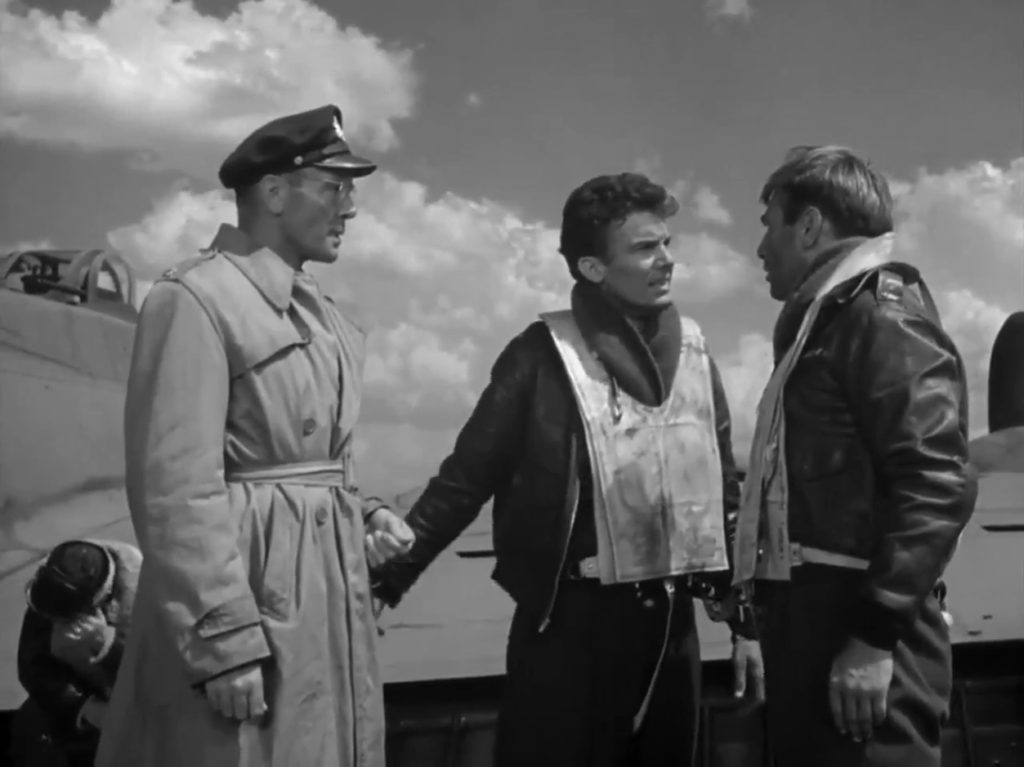
This intentionally shocking line is meant to show us how normalized horrific scenarios have become for these men — and we sympathize completely not only with the traumatized pilots but with their commander (Merrill), who wonders how much the boys can handle:
“Do they know up here what my boys have been taking for three days in a row? That they’ll be up all night to get 18 in the air for tomorrow? How much do you think they can take? You know they’re falling asleep at briefing? Are you gonna drive them till they crack? … Those boys are flesh and blood. They’ll die for you, but they’ve got to have a chance and they know they haven’t got one.”

The remainder of the film pivots to Peck, whose approach is polar opposite to Merrill’s:
“I’m not trying to tell you not to be afraid. Fear is normal. But stop worrying about it and about yourselves. Stop making plans. Forget about going home.”
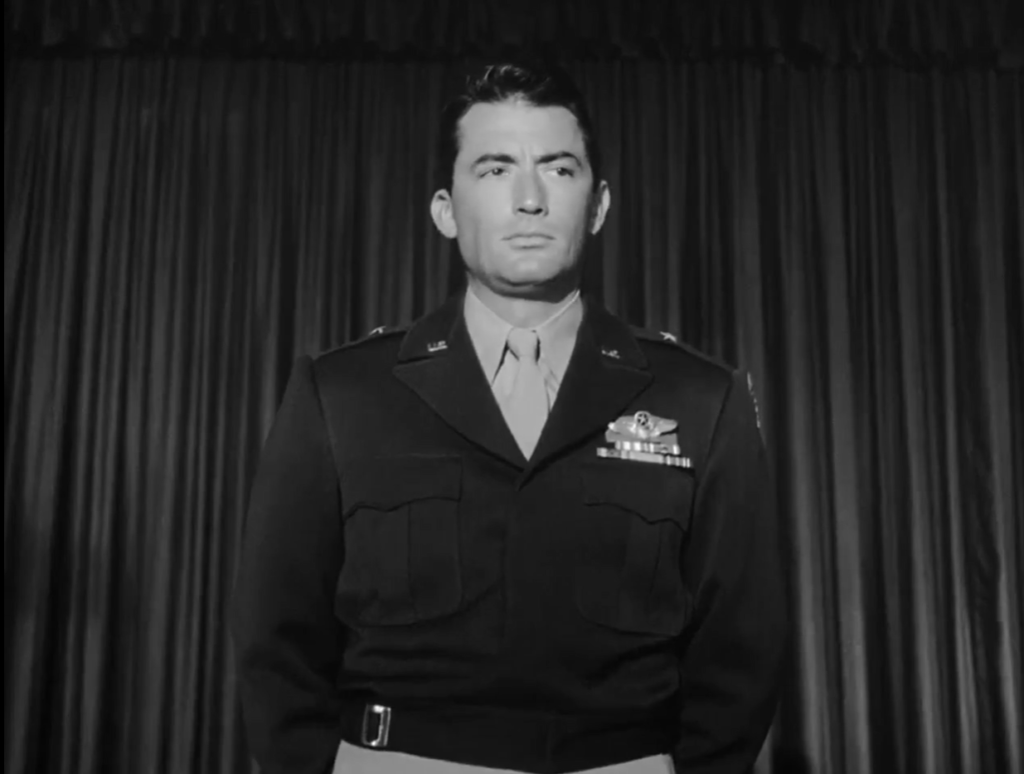
To the film’s credit, no artificial dramas or conflicts are created between individuals jockeying for power. Instead, we get the real sense that these leaders are trying to figure out precisely the best way to motivate their men to knowingly risk their lives for the sake of a bigger cause — even if this involves using harsh language to call out cowardice, as when Peck speaks bluntly to a legacy pilot (Hugh Marlowe) who has not been pulling his weight:
“You’re the son of one fine officer and the grandson of another… As far as I’m concerned, you’re yellow. A traitor to yourself, to this group, to the uniform you wear… I hate a man like you so much that I’m gonna get your head down in the mud and tramp on it. I’m gonna make you wish you’d never been born.”
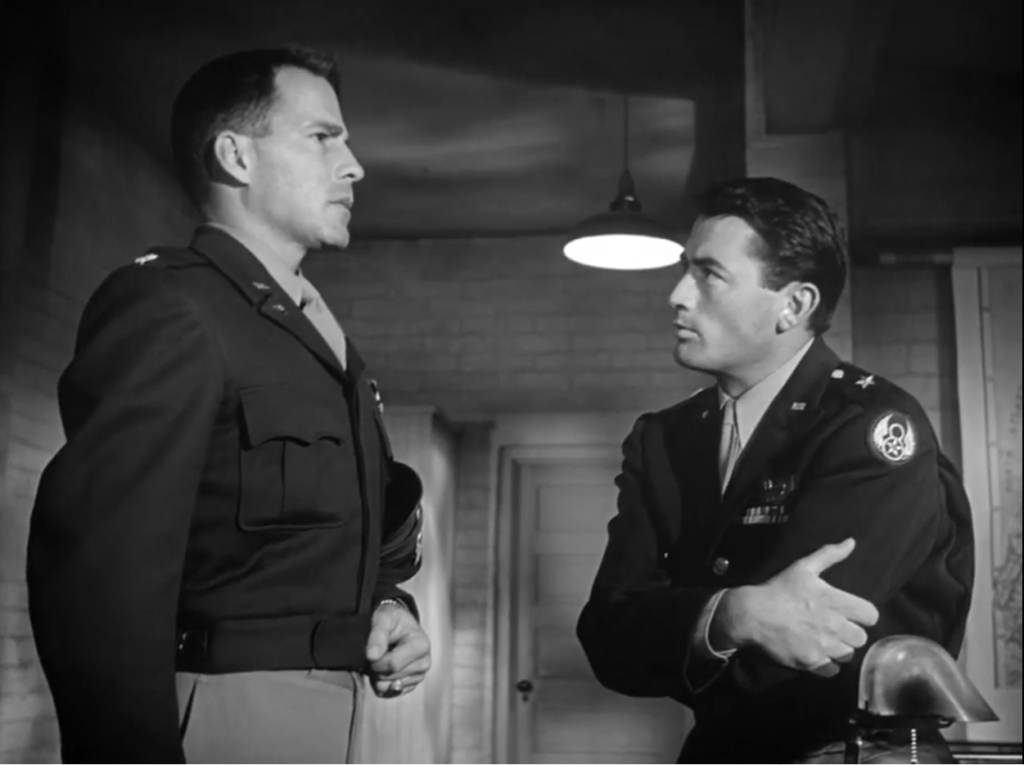
Yikes. Will this approach work? Eventually, we find out. By the time we finally see later fight sequences (including Peck himself up in the air):

… we know that none of the choices that have been made are easy, and that all men eventually “break” at some point. What matters is the collective efficacy they’ve built together.
Note: In case you’re wondering about the film’s title (I was), according to Wikipedia:
The term “twelve o’clock high” refers to the practice of calling out the positions of attacking enemy aircraft by reference to an imaginary clock face, with the bomber at the center. The terms “high” (above the bomber), “level” (at the same altitude as the bomber) and “low” (below the bomber) further refine the location of the enemy. Thus “twelve o’clock high” meant the attacker was approaching from directly ahead and above. This location was preferred by German fighter pilots because, until the introduction of the Bendix chin turret in the B-17G model, the nose of the B-17 was the most lightly armed and vulnerable part of the bomber. Enemy fighter aircraft diving from above were also more difficult targets for the B-17 gunners due to their high closing speeds. Bartlett’s wife, actress Ellen Drew, named the story after hearing Bartlett and Lay discuss German fighter tactics, which usually involved head-on attacks from “twelve o’clock high”.
Notable Performances, Qualities, and Moments:
- Gregory Peck as General Savage

- Fine supporting performances
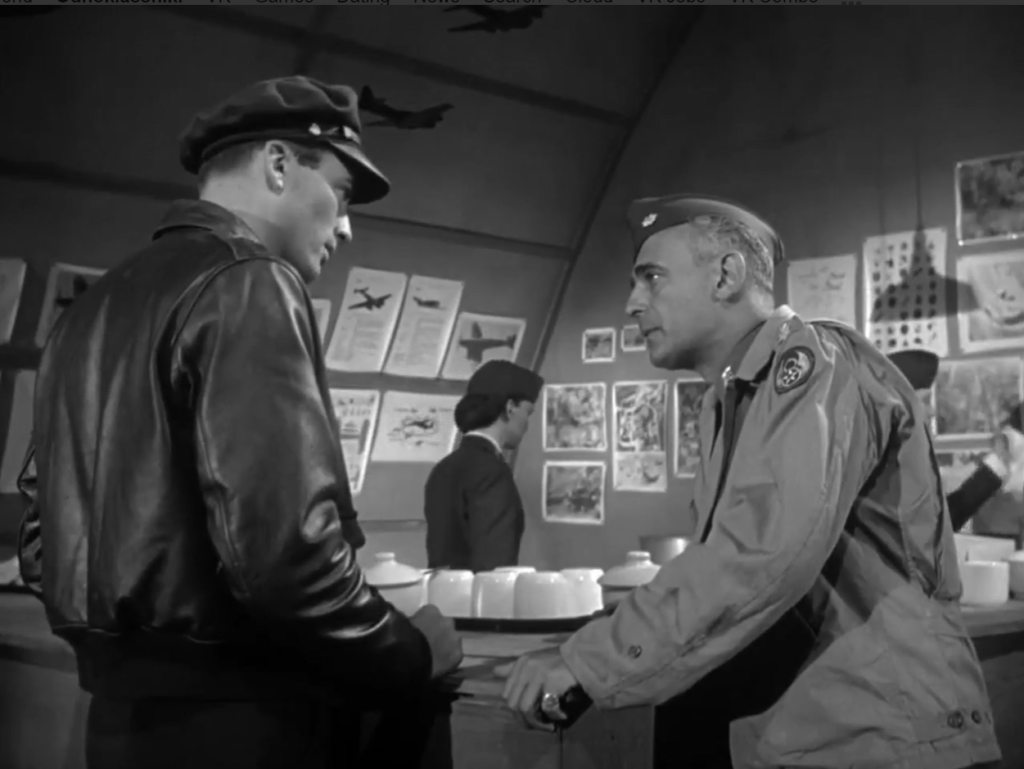
- Leonard Shamroy’s cinematography
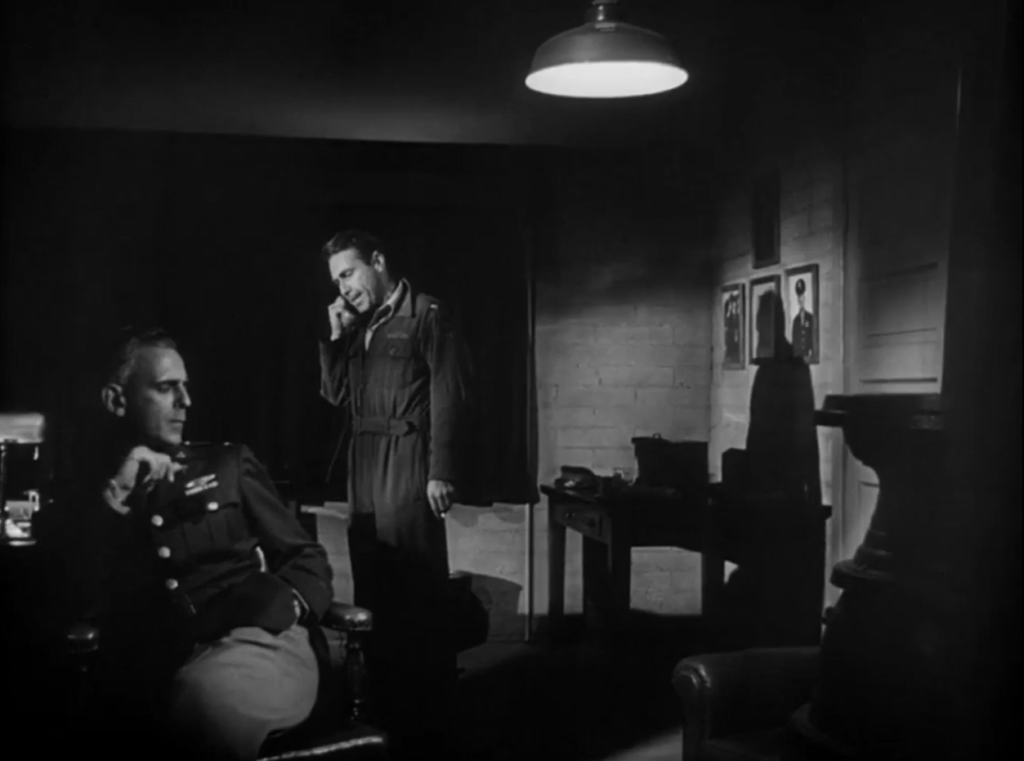
- A strong screenplay by Sy Bartlett and Beirne Lay, Jr.
Must See?
Yes, as a powerful military drama. Selected in 1998 for preservation in the United States National Film Registry by the Library of Congress as being “culturally, historically, or aesthetically significant.”
Categories
- Good Show
- Oscar Winner or Nominee
Links:
|
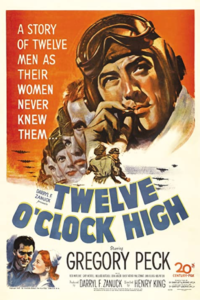








One thought on “Twelve O’Clock High (1949)”
Agreed – must-see, “as a powerful military drama”. As per my short 8/30/14 post in ‘The ’40s-’50s in Film’ (fb):
“Did you ever see a light bulb burn out?”
‘Twelve O’Clock High’ (1949): Til now, I’d not seen this all the way through. I saw part of it when I was a kid, and didn’t absorb it. Unlike many WWII movies – which concentrate on ‘us and them’ & winning – this film takes on the additional dynamic of morale.
In a slight dry-run for his work as Ahab, Peck takes over a squad that doesn’t like him, & the study of morale begins. Director Henry King may not have had a wildly distinguished career but here he took command for perhaps his best film – with very natural (i.e., non-‘acting’) performances. Dean Jagger won an Oscar for a nicely understated supporting role. I esp. like the near-absence of movie music.